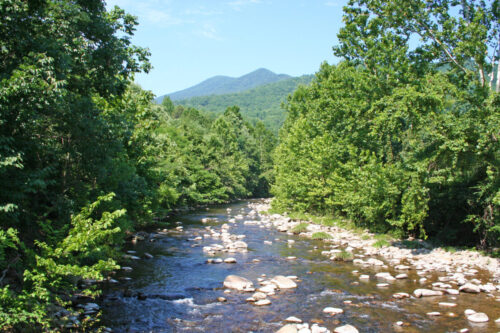 Forests Protect Water
Forests Protect Water
Forests play an important role in providing clean water. More than 50% of Virginia’s freshwater resources originate from forests that cover about two-thirds of the state. In addition to providing clean water, forests also absorb rainfall, refill groundwater aquifers, slow and filter stormwater runoff, reduce floods, and maintain watershed stability and resilience.
Read more about how forests protect water.
Forests and Drinking Water
People need access to clean, plentiful drinking water. As populations increase across the Commonwealth, public utilities must find ways to meet the needs of Virginians. You may not realize that the clean, clear water that comes out of your faucet most likely came from a forest. Almost half of Virginia’s surface drinking water comes from state and private forestlands within the Commonwealth. To protect our drinking supply long into the future, we need to conserve forests. Public drinking water sources include rivers, streams, lakes, reservoirs, springs, and groundwater.
Read more about forests and drinking water.
Benefits of Streamside Forests
Forests are highly important and effective at keeping Virginia’s waters clean. Trees and forests near streams and waterways are even more important. Tree roots hold tightly to soil, keeping it in place and preventing soil movement or erosion. The tree canopies and the leaves on the ground intercept rainfall and slow it down allowing the excess nutrients or other pollutants to be filtered out of the water. Streamside forests provide shade that keeps water temperatures lower and more suitable for aquatic life in the stream.
Read more about the benefits of streamside forests.
Chesapeake Bay Watersheds
Sixty percent of the Virginia Commonwealth is in the Chesapeake Bay watershed. Virginia has four major rivers that drain directly into the Chesapeake Bay: the Potomac, Rappahannock, York, and the James. The 1983 Environmental Protection Agency’s (EPA) Chesapeake Bay Agreement set the goal to reduce pollution and restore the bay watershed.
Read more about Chesapeake Bay watersheds.
